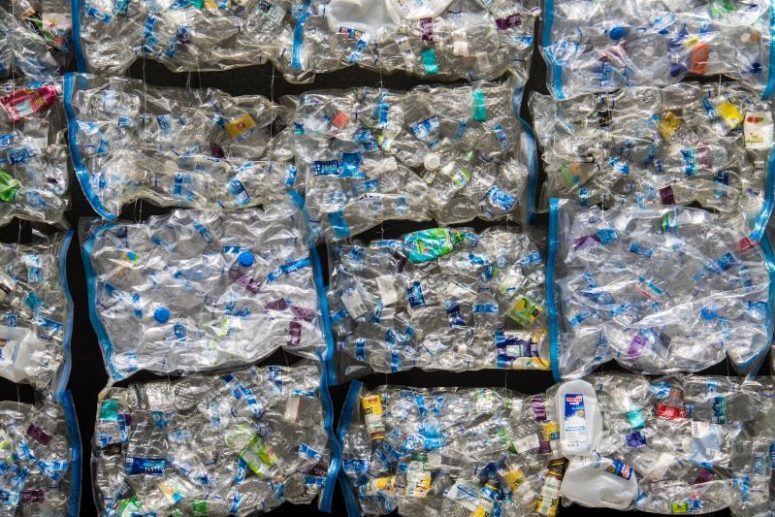
Plastic Recycling Facts You Should Know
The amount of plastic waste produced every year is staggering. We are surrounded by plastic, and it’s no secret that plastic waste is a massive problem for our planet.
While you may have heard the sentiment a thousand times, you may not be sure what you can do to make a difference.
Here are some of the more astounding facts about plastic waste. Here’s a small sample of plastic facts you can share with coworkers, family, and friends because the problem will never really be fixed until we expose how big it really is. So let’s dive in.
Plastic Bottles
According to a report by The World Counts, approximately 1 million plastic bottles are purchased every minute. That number is only expected to rise in the coming years. That means billions of plastic bottles are produced each year, making plastic bottle recycling a crucial aspect of waste management. While many plastic bottles are recyclable, recyclers can only reuse plastic two or three times before the polymer chain (fancy lingo for plastic quality) is too short for creating valuable products.
Milk Containers
Across the milk-consuming parts of the world, milk containers have changed from glass to plastic in the last 50 years. Milk containers of all sizes are one of the most commonly used plastic containers. Millions are produced daily. Unfortunately, many of these bottles end up in landfills, rivers, and oceans, causing harm to wildlife and the environment.
The small island nation of New Zealand is famous for its dairy industry. There are less than five million people in the country, and yet 190 two-liter bottles of milk are sold every minute in New Zealand supermarkets. While milk bought in glass can be more expensive, it diminishes the avalanche of plastic containers since glass is much easier to recycle indefinitely.
Plastic Wrap
Plastic wrap is often used to protect food, but it also contributes to plastic waste. In fact, Americans use enough plastic wrap each year to circle the Earth twice. There are not many mental images that better encapsulate the problem of plastic than Earth literally wrapped up in a plastic wrap. While innovations in recycling plastic wrap and other soft plastics are underway, there are few useful and sustainable ways to recycle this type of plastic waste at present.
Plastic Recycling Rates
Plastic recycling rates vary around the world. Some countries recycle a large portion of their plastic waste, while others recycle very little. This emphasizes the importance of consistent and effective recycling programs worldwide to reduce plastic waste and conserve resources. While western and modernized countries can often claim better recycling rates than other countries, their success is often because they ship plastic waste overseas for poorer economies to handle. In 2019, it was estimated by Statista Research Department that each person in Singapore generated 76 kilograms of single-use plastic waste, making them the highest per capita contributor to single-use plastic pollution globally.
Common Unrecyclable Plastics
Some of the most common unrecyclable plastics include plastic bags, bubble wrap, and styrofoam. Balloons and coffee cups also fall into this sad and popular list of things we should use more intentionally or not at all. These types of plastics are not typically accepted by recycling facilities and often end up in landfills or the environment, causing harm to wildlife and ecosystems. In 2017, the highest demand for plastic was for packaging production, utilizing a jaw-dropping 146 million metric tons.
The Pacific Garbage Patch
A part of the largest ocean on earth contains a floating collection of plastic waste which is a growing problem for our planet. The massive island of debris is estimated to be twice the size of Texas and is made up of billions of pounds of plastic waste, mostly in the form of microplastics. This patch is created by ocean currents that transport plastic from coastal areas to a central location, resulting in a hazardous accumulation of waste. The plastic pollution in the patch endangers not only marine life but also threatens human health as it can potentially enter the food chain.
So now you know the grim and grand facts of plastic consumption. What do we do about the billions of plastic bottles, milk bottles, and yards of plastic wrap? Act where you can. Remember these plastic recycling facts next time you’re discussing waste management, recycling, or how you can help be a solution to our plastic waste problem.
Do your part in preserving our planet by recycling as much as possible and reducing plastic consumption as well. That’s why it’s so important to learn about plastic recycling and make informed decisions when it comes to waste management. It’s the facts that back the grass root action that will eventually make the world change for the better. Waste removal and recycling in Sacramento continue to help us all make better choices for the planet.
Infographic
It is unbelievable how much plastic garbage gets manufactured each year. Plastic is all around us, there’s no secret that plastic trash is an enormous concern for the environment. As a result, there are billions of plastics manufactured, making recycling plastics considered to be an essential part of waste management.


